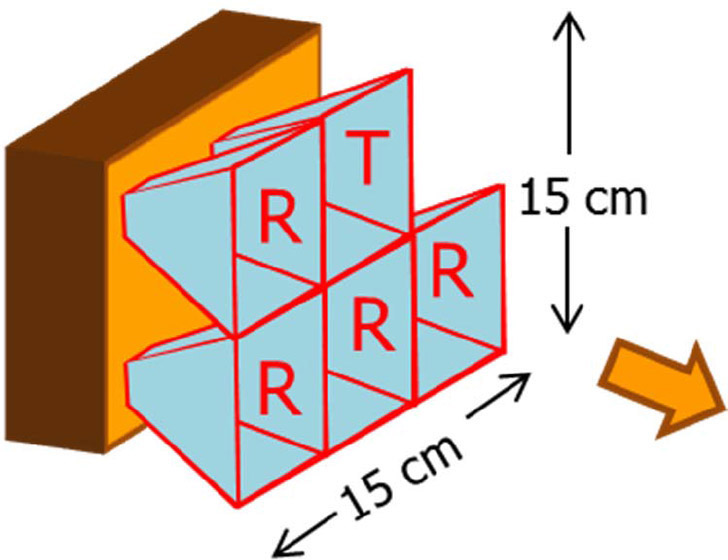 |
| The ViSAR antenna system, showing the five antenna horns. T: Transmission horn. R: Receiving horn. |
Video Synthetic Aperture Radar (ViSAR) - Darpa
Synthetic aperture radar for imaging through cloud layers | SPIE Newsroom: SPIE
We are currently developing a high-frequency radar—ViSAR—that can be used to image through cloud cover and provide sufficiently high resolution and frame rates to track moving targets on the ground. We plan to integrate our system in the laboratory during the fall of 2015, and then pack it into the MTS-B during the winter and spring of 2016. In the summer of 2016, we will fly the MTS-B on a DC-3 aircraft to demonstrate over-the-air real-time imaging of moving and stationary targets through clouds. We are also exploring the possibility of providing additional capabilities with our radar system. These could include the measurement of wind speeds and directions (to inform adjusting fire), performing battle damage assessments, and providing a secure short-range air-to-ground datalink.
Our
ViSAR system consists of a 233GHZ front-end that up-converts from, and
down-converts to, a back-end that is built from a conventional microwave
radar instrument. We will install the 233GHz portion in a tactical
gimbal, which is known as the Multi-Spectral Targeting System-B (MTS-B).
The MTS-B is a 20-inch gimbal that is flown on a variety of platforms,
e.g., the MQ-9 Reaper unmanned aircraft. By fitting with this gimbal, we
plan to demonstrate our ViSAR system can easily be installed on
tactical aircraft, such as the AC-130.
Our ViSAR antenna design includes five small antenna horns, i.e., one horn for transmission and
four receiving horns. There are four receivers (one for each receiving
antenna horn), each with an analog-to-digital converter. We use
signal-processing algorithms to process the data. We are therefore able
to generate high-resolution ground-focused SAR images, which can be used
to detect and relocate moving targets. The acquired images can then be
mapped onto an angle/angle display, similar to the system used by AC-130
operators.
Bruce Wallace
Defense Advanced Research Projects Agency (DARPA)
Arlington, VA
Northrop Grumman and L-3 Communications to help DARPA develop imaging radar for gunships operating in bad weather - Intelligent Aerospace
Northrop Grumman is doing the work under terms of a $5.6 million contract from the U.S. Defense Advanced Research Projects Agency (DARPA) in Arlington, Va., for the Video Synthetic Aperture Radar (ViSAR) System Design and Development program, which seeks to develop a prototype radar that can detect and track moving targets through clouds with the same ability that current infrared targeting systems have in clear weather.
Northrop Grumman joins the L-3 Communications Corp. Electron Devices segment in San Carlos, Calif., on the ViSAR System Design and Development program. L-3 won its contract in July.
DARPA awards $2.6M contract to design ViSAR program -- Defense Systems
The Defense Advanced Research Projects Agency awarded a contract of almost $2.6 million to design and build a video synthetic aperture radar system to improve U.S. aircraft performance in ground target maneuvering in cloud, dust and other obscurants. The contract was awarded to L-3 Communications in Arlington, Va., on July 8. L-3 Communications will develop flyable EHF band exciters and receivers, synthetic aperture radar scene simulation tools, and EHF-band SAR exploitation algorithms.

No comments:
Post a Comment